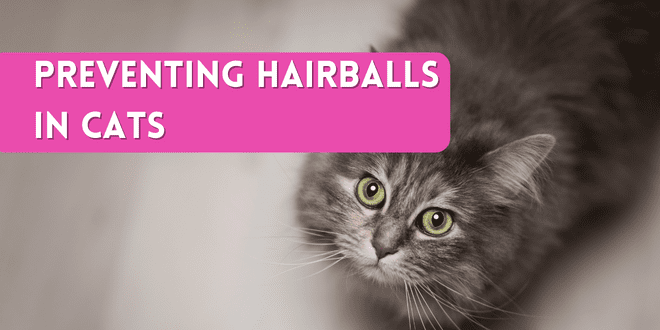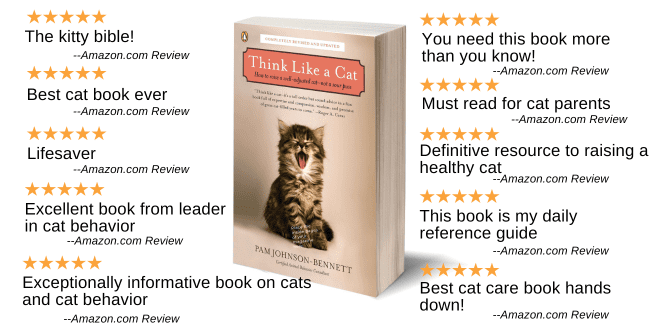 Living with a cat for even the shortest amount of time quickly reveals they have meticulous grooming habits. That frequent grooming is not rooted in vanity; it’s crucial for health and survival. This fastidious grooming can also lead to a common issue known as hairballs, technically referred to as trichobezoars.
Living with a cat for even the shortest amount of time quickly reveals they have meticulous grooming habits. That frequent grooming is not rooted in vanity; it’s crucial for health and survival. This fastidious grooming can also lead to a common issue known as hairballs, technically referred to as trichobezoars.
What is a Hairball?
Hairballs develop when cats swallow enough hair that it forms into a wad, mixed with saliva. Cats have specialized spines on their tongue known as papillae, that curve backward and play an important role in grooming and feeding behavior. The papillae are extremely efficient tools for stripping the meat off bones during ingestion of prey. They also help collect dirt, debris, and loose hair from the cat’s coat during grooming. While the papillae are very helpful in those duties, the direction they face make it challenging for the cat when it comes to spitting things out. Often, the hair collected on the cat’s tongue gets swallowed. In many cases, the swallowed hair passes through the digestive tract without issue and ends up being eliminated with the cat’s feces.
Although the papillae on the cat’s tongue provide many benefits, they can also present a potential risk for hairballs. Hair isn’t digestible. When a cat grooms, the swallowed hair may form a hair clump in the stomach. When trying to vomit up a hairball, you may see the cat take a position of an arched back and outstretched neck. You then hear the familiar hacking, gagging, or retching sound of your cat attempting to get rid of the swallowed hair. The sound resembles a coughing noise with the cat either being successful in bringing the clump of hair back up, or not being successful, where in that case, all that comes up is a bunch of saliva and bile. Ironically, even though they are called hairballs, when vomited back up, they are more cigar shaped. This tubular shape is due to having to travel back up through the narrow esophagus and can easily be mistaken for cat poop. Upon closer inspection though, your nose will tell you that this slimy, poop-shaped object doesn’t have the tell-tale odor of feces.
When fresh, hairballs are wet and easy to notice, making them not much of a challenge to clean up if you’re lucky enough to have a cat who targets floors instead of carpet. If unnoticed for some time, they will dry out, flatten, and become more difficult to detect, especially on carpets or floors with a similar color.
You may be unaware of how often the cat experiences hairball problems until you unexpectedly step on a slimy fresh one. This cat parent experience is often reserved for those middle of the night, bare-footed trips to the bathroom.
What Causes Hairballs in Cats?
Hairball problems can vary significantly from one cat to another. Some cats may only experience occasional episodes while others have hairball problems on a regular basis, resulting in the everyday activity of you going on a hairball search around the house after hearing that retching sound coming from some distant room. Many cats also cry out before they are about to begin vomiting so you may also get that early warning as well so you can come running with paper towels in hand. Cats are fastidious groomers, and some cats groom even more than expected.
- Cats who are stressed or bored often use grooming as a displacement behavior.
- Cats who shed more than usual, or ones with skin issues may experience more frequent hairballs.
- Longhaired cats, and ones with dense coats are more prone to hairballs.
- Cats with allergies, skin issues, or external parasites (such as fleas) often groom excessively to relieve the itching and irritation and may end up with hairballs.
- Pain can also result in hairballs as a cat repeatedly licks a certain area of the body in an attempt to find relief.
- Certain seasons of the year associated with shedding may also result in more hair intake during grooming.
As mentioned earlier, hairballs can indeed travel through the digestive tract and eventually be eliminated with the feces. When scooping the litter, you might not always notice the presence of a small amount of hair mixed in with the stool. You may not see that there’s a potential problem unless you detect what appears to be a large clump of hair intertwined with the feces. Hairballs can lead to constipation, making it difficult for the cat to pass stool comfortably, and in more severe cases, the cat may not be able to pass the stool at all. If enough hair is ingested, the hairball becomes too large and results in a blockage.
When Should You Call the Veterinarian?
With the occasional hairball, a cat who can successfully vomit it back up without issue, will typically feel better immediately afterward, and return to normal behavior. If it doesn’t happen that way, or if you have any questions or concerns, a veterinarian visit is needed.
Call the Veterinarian:
- If your cat is trying to vomit up the hairball and after several tries is unsuccessful.
- If your cat vomits several times, whether a hairball is brought up or not because there may be a blockage, or some other medical issues going on.
- If your cat vomits the hairball and doesn’t seem to feel better afterward.
- If your cat regularly vomits up hairballs.
- If your cat attempts to poop and is unable to, or visits the litter box frequently without being able to eliminate. This may be an indication of constipation, a blockage, or it could also be a urinary issue.
- If there’s a change in your cat’s appetite, appearance, behavior, or any aspect of typical litter box habits.
Treatment for Hairballs
The infrequent hairball usually doesn’t require veterinary intervention unless your cat has difficulty vomiting it back up. It may just be a reminder to help your cat by doing more frequent brushing to reduce the amount of loose hair. Hairball prevention paste/gel given orally on a regular basis may help. These gels don’t get absorbed and just lubricate the intestinal tract.
Making cat grass available for your cat may also help with vomiting hairballs up. The increase in fiber from the cat grass may also be beneficial. If you do offer grass, don’t offer grass from the yard because it may contain pesticides and other harmful chemicals. Yard grass may also have animal feces on it. Purchase good quality organic cat grass. You can either grow the grass from seeds or purchase already sprouted grass.
Your veterinarian may also prescribe a higher fiber food, or may recommend adding plain canned pumpkin into your cat’s meals.
Frequent hairballs shouldn’t be viewed as something you can merely treat on your own with OTC products or treats though. Consult your veterinarian on the best course of action and which products will be most beneficial for your cat’s specific case. There may be other health concerns or stress-related issues causing the increase in hairballs that need to be addressed.
Your veterinarian will examine and test for conditions that may be the underlying reason for the increased formation of hairballs. If the problem is behavioral, such as increased stress, resulting in excessive grooming, you may receive a referral to a certified behavior expert if you’re unable to identify the cause.
If your cat is unable to vomit up the hairball, or it has caused an intestinal blockage, emergency veterinary care is required. In extreme cases, the intestinal blockage may need to be removed surgically.
I know this isn’t a fun thing to do but when you scoop the litter pay attention to the appearance of your cat’s waste. Look for signs of constipation or diarrhea. Also, check out the feces for hair. It’s a good practice to monitor your cat’s litter box habits anyway, but it’s easy to miss indications of increased hair tangled in your cat’s poop if you rush to just toss the waste without a little inspection.
What NOT to Do
First of all, don’t ignore hairballs. Pay attention to the frequency of the problem so you can be proactive.
Don’t give your cat butter, grease, olive oil, or any other type of cooking oil in an attempt to lubricate the digestive tract. These fats are digestible and will do nothing to aid in hairball prevention.
Don’t give your cat mineral oil because it’s tasteless and odorless and can easily be aspirated.
If you hear your cat hacking repeatedly and nothing ever comes up, it could be an attempt at vomiting a hairball, but it could also be an actual cough so don’t ignore this repeated behavior. There could be another underlying medical issue such as a respiratory infection. The repeated hacking or retching sound means something is wrong and veterinary care is needed. Many cat parents often confuse the sound of a cat coughing as an attempt to vomit.
Preventing Hairballs in Cats
Brush your cat. Quite simply, this is one of the most efficient and effective ways to reduce the formation of hairballs. Help your cat with grooming duties by brushing regularly. If you have a kitten, get them him sed to the sensation of being brushed by doing short, positive sessions every day with a gentle brush. That way, by the time he’s an adult he will be used to the process and maybe even find it pleasurable.
If you have an adult cat who isn’t used to being brushed, start with short sessions, and provide treats while you brush. You may need to start with a grooming glove and work up to using a brush, but regular brushing is essential to remove loose hair, debris, as well helping distribute skin oils. The time you spend brushing your cat is also an opportunity to do a little physical health check to look for any lumps or wounds that may have gone unnoticed previously.
Both shorthaired and longhaired cats need to be brushed. Longhaired cats should be brushed daily. If you have a longhaired cat whose coat tends to mat and you’re unable to remove them safely yourself, you may need the help of a professional groomer.
Flea control. Fleas or other parasites may be the reason your cat is grooming excessively and ending up with increased hairballs. Talk to your veterinarian about appropriate flea control products for your cat.
Stress control. Increased grooming can often be the result of the cat displacing stress. With over-grooming, you may notice the cat grooming the same areas of the body over and over again, often to the point of creating bald patches. If you suspect stress is the cause, it’s time to evaluate the environment to identify the trigger. In a multicat household it could be that one cat is being intimidated by another. Changes within the household can also cause a cat to feel stressed. There are numerous things that can cause stress, and many may be easily overlooked because they appear minor to the human family members. If you can’t identify the possible cause of the stress, talk to your veterinarian about a referral to a certified behavior expert.
Provide enrichment and exercise. Your cat may need more activity and mental stimulation through interactive playtime and other opportunities to play and discover. Conduct at least two interactive play sessions a day to encourage your cat remain active and engaged in a positive way.
Set up opportunities for solo playtime with puzzle feeders and other puzzle toys so your cat can focus on discovery and reward instead of becoming bored or fixating on whatever might be causing stress.
Re-evaluate the environment to see what can be done to provide more enrichment through additions such as a cat tree by the window, cat shelves, or walkways, scratching posts, and cozy napping areas. Make sure your cat’s environment provides stimulation, security, comfort, and the choice of whether to interact or retreat.
Proper nutrition. Your veterinarian may recommend a food with a higher fiber content specifically formulated for hairball prevention. You may also be advised to add some pumpkin puree or another high fiber product to your cat’s meal. If advised to add pumpkin puree, be sure you purchase plain puree and not pumpkin pie mix. They aren’t the same.
Adequate hydration. Always provide clean, fresh water in multiple locations around the house. Proper hydration is essential for all aspects of health, including digestion. If your cat is on a higher fiber food, it’s very important to ensure fresh water is readily available. Clean the bowl daily and replenish with fresh water to prevent the buildup of biofilm on the bowl. Some cats prefer to drink from a flowing water source so consider installing a pet water fountain for your cat if you don’t think they’re drinking enough. Additionally, you may have to experiment with a few different types of water bowls because your cat may have a preference when it comes to size and shape.
Hairball prevention products. Hairball prevention pastes or gels can help lubricate the digestive tract to make it easier for accumulated hair to pass through. Consult with your veterinarian about the recommended dosage to use. Most cats like the flavor of hairball prevention products.
Cat grass. As mentioned earlier, offering your cat good quality, organic cat grass may aid in vomiting hairballs up as well as the extra fiber being helpful in preventing them from forming. Introduce cat grass slowly so your cat’s system gets used to the increase in fiber.
Be Consistent
Hairballs may continue to be a struggle for your cat, but with proper preventive measures and appropriate treatment, you can reduce their frequency. Brush your cat regularly, use hairball prevention products as recommended by your veterinarian, feed the proper diet, provide fresh water, reduce stress, offer cat grass, and ramp up the environmental enrichment. These are some of the keys to preventing hairballs.
Need More Information?
If you have any questions regarding your cat’s hairball problem or any other health concerns, consult your veterinarian. This article is not intended to diagnose and is not a replacement for your cat’s personalized veterinary care.
For information about cat behavior and training, check out the best-selling books by Pam Johnson-Bennett. Pam’s books are available at bookstores and online. We’ve included Amazon associate links here on our website.
 Problem Solving & Advice by Pam Johnson-Bennett Cat Behavior Expert & Best-selling Author
Problem Solving & Advice by Pam Johnson-Bennett Cat Behavior Expert & Best-selling Author





